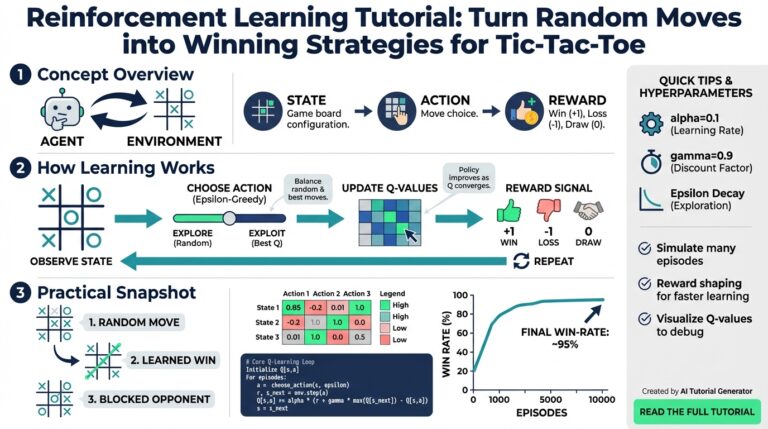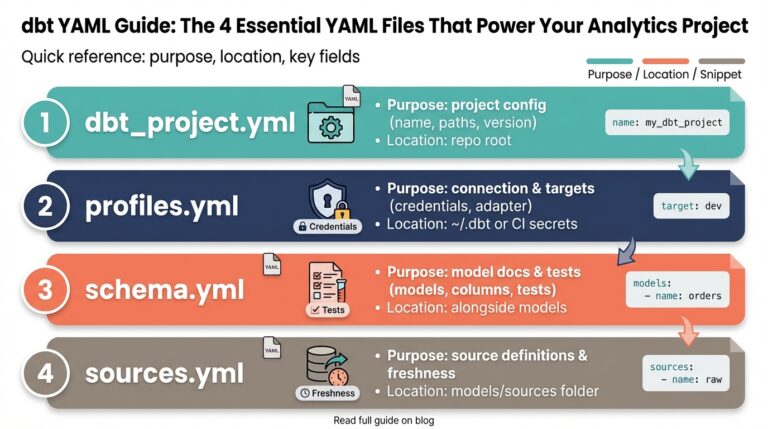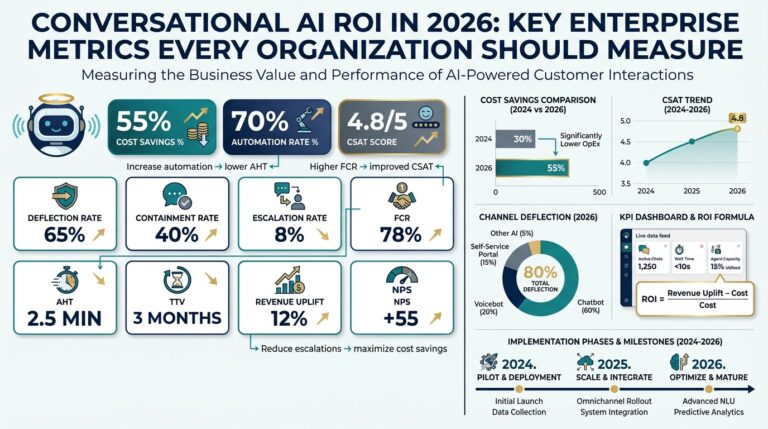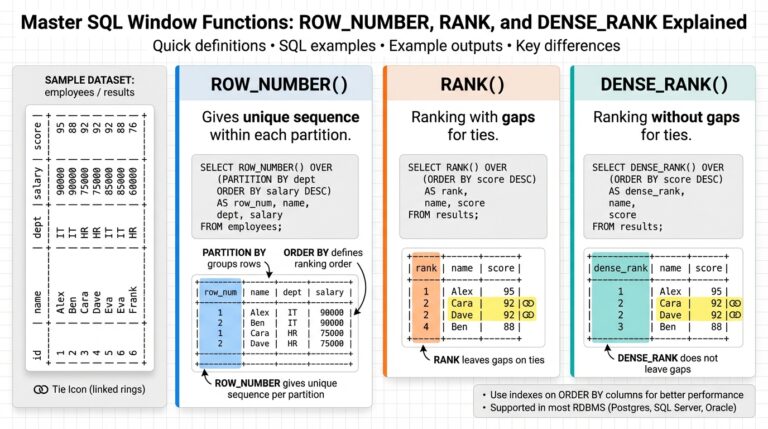Understanding LLM Hallucinations: Causes and Consequences
Large Language Models (LLMs) have revolutionized AI’s capability to generate human-like text, but they remain susceptible to a phenomenon known as hallucination—producing convincingly plausible yet incorrect or entirely fabricated information. Understanding why hallucinations occur and the risks they pose is critical for anyone deploying these models, whether in research, business, or creative sectors.
What Causes LLM Hallucinations?
- Data Limitations and Bias
LLMs are trained on massive datasets scraped predominantly from the internet. If the underlying data contains inaccuracies, biases, or outdated knowledge, the model is prone to replicate or even amplify these issues. For instance, if a dataset has limited examples of a rare medical condition, the model might mistakenly blend details from unrelated topics to “fill the gaps.” The Nature article on LLM hallucinations discusses how data quality directly impacts the accuracy of generated outputs. - Pattern Recognition Limitations
LLMs operate without real-world understanding or common sense reasoning—they assemble words by predicting what comes next based on the statistical patterns learned during training. Sometimes, this leads to coherent but nonsensical statements. For example, if prompted with a question on an obscure scientific process, the LLM may fabricate an answer that sounds right but lacks any real grounding. - Prompt Ambiguity
Vague or ambiguous prompts frequently result in hallucinations. If a user asks a broad question with insufficient context, the LLM fills in the blanks using probability, rather than fact. In practice, an open-ended prompt like “Explain why apples turn blue” would likely elicit a hallucinated explanation since apples do not naturally turn blue. - Objective Misalignment
LLMs are often optimized for fluency and engagement instead of factuality. While this makes for smoother conversational flow, it increases the likelihood of confidently delivering misinformation. Studies, such as those referenced by Stanford HAI, highlight the trade-off between natural language quality and truthfulness.
Consequences of LLM Hallucinations
- Erosion of Trust
When an LLM provides plausible but false information, users may lose trust in the tool and the organization deploying it. This is particularly damaging in contexts where reliability is paramount—such as healthcare, finance, or education. The Scientific American discusses the lasting impact of AI hallucinations on public trust. - Propagation of Misinformation
Erroneous LLM outputs can quickly spread if integrated into public-facing systems, inadvertently reinforcing false narratives or introducing new errors. For example, if an LLM generates a fabricated stat in a news article, it may be cited elsewhere, compounding the problem. The Brookings Institution explores how unchecked AI outputs can distort collective knowledge. - Decision-Making Risks
Organizations that rely on LLMs for optimistic suggestions or data summaries may act on incorrect information, leading to flawed decisions. This is especially risky where legal compliance and safety protocols hinge on accuracy—a mistaken regulatory guideline could result in compliance failures or operational hazards.
As LLMs are further integrated into critical tasks, understanding and mitigating hallucinations becomes essential. By acknowledging the roots and repercussions of this issue, we take important steps toward safer, more trustworthy AI deployments. For further reading, the arXiv preprint on LLM hallucinations offers a comprehensive technical overview.
Limitations of Traditional RAG Approaches
Despite the surge in popularity and effectiveness of Retrieval-Augmented Generation (RAG), these architectures continue to face notable challenges—particularly when it comes to fully eliminating large language model (LLM) hallucinations. Traditional RAG systems, while impressive, still exhibit certain limitations that hinder their ability to deliver consistently grounded answers. Let’s dive into some of these key constraints, exploring why they persist and what they mean for organizations relying on LLMs for reliable information delivery.
1. Overreliance on Retrieval Quality
One of the biggest issues with classic RAG models lies in their dependence on the quality of the information retrieved from external knowledge bases. If the retrieval component surfaces outdated, partially relevant, or marginally inaccurate data, the LLM has no mechanism to independently verify its correctness—instead, it risks amplifying the problem by generating plausible-sounding but incorrect outputs. This phenomenon is well-documented in recent literature (arXiv:2306.11644), which shows that the retrieval step is often the weakest link in ensuring factual responses.
2. Incomplete Context Fusion
Although RAG retrieves top-ranked documents to inform the generative step, the LLM continues to face context window limitations. If the required facts are distributed across several retrieved chunks, and the model truncates part of that information, key details can get lost or overlooked. Furthermore, RAG models often treat retrieved passages equally, lacking a clear prioritization or synthesis mechanism, which sometimes leads to answers that are fragmented, contradictory, or nonsensical. This challenge becomes more evident in complex domains such as medicine or law (Nature Communications).
3. Brittleness to Query Ambiguity
Traditional RAG approaches can struggle with ambiguous or under-specified queries. If a user’s prompt lacks context, the retriever may grab irrelevant content, or worse, the LLM may hallucinate details to fill in perceived blanks. Advanced information synthesis—such as handling pronouns, entity disambiguation, or multi-turn dialogue context—is often poorly addressed in standard RAG setups. Researchers from Stanford have highlighted this limitation and proposed new evaluation frameworks to assess the factual grounding of AI answers (Stanford HAI).
4. Absence of Dynamic Validation Steps
Classic RAG architectures lack a robust layer for post-generation validation. Since these models perform retrieval and then immediately hand off to the LLM for synthesis, there is little opportunity for intermediate checks or cross-referencing. This “one-shot” approach ignores the potential of iterative retrieval, deeper reranking, or consensus mechanisms that could substantially reduce hallucination rates. Industry experts at OpenAI and DeepMind have advocated for adding verification and self-consistency modules to control hallucination (DeepMind Blog).
In summary, traditional RAG methodologies provide a strong foundation for reducing hallucinations in LLMs but are ultimately limited by the fidelity of their retrieval processes, restricted context handling, vulnerability to query ambiguity, and lack of structured answer validation. As a result, new architectures are emerging that take a more holistic approach to evidence synthesis, context management, and iterative verification for smarter and more reliable LLM deployments.
Key Principles Behind Smarter LLM Architectures
Today’s large language models (LLMs) are undeniably powerful, but traditional augmented retrieval approaches (RAG) often leave them vulnerable to hallucinations. In pursuit of smarter systems, researchers and developers are establishing core principles that genuinely move the needle toward reducing these risks. Let’s break down the foundational ideas driving smarter LLM architectures:
1. Contextual Grounding Beyond Simple Retrieval
The hallmark of next-generation LLM design is integrating factuality checks right at the heart of the inference process. Instead of merely injecting external documents as additional context, smarter systems parse, evaluate, and weigh pieces of information from multiple trusted sources. For example, models inspired by Google’s fact-checking research dynamically cross-reference claims against curated databases or live APIs.
Steps in practice:
- Extract candidate facts from the model’s draft output.
- Independently verify each using evidence from high-authority sources (such as scientific databases or official websites).
- Score and filter responses, explicitly penalizing any statement that can’t be supported by external verification.
This process significantly mitigates the risk of LLMs making confident but incorrect assertions.
2. Modular Reasoning and Explainable Workflows
Rather than monolithic, opaque architectures, advanced LLMs are designed with explicit reasoning chains. This means generating intermediate reasoning steps that can be inspected or audited. Projects like OpenAI’s Chain-of-Thought methodology illustrate this principle.
Example workflow:
- Decompose user queries into smaller sub-tasks.
- Apply distinct modules focused on retrieval, logic, and evidence scoring.
- Generate a final response with a referenced trail of reasoning steps, increasing both accuracy and transparency.
This approach not only curtails hallucinations but also empowers developers and users to trace the model’s logic.
3. Adversarial and Continual Learning Loops
Traditional architectures are often static post-deployment. Smarter LLMs build on adaptive feedback loops that fine-tune model behavior in response to hallucinations caught in the wild. For instance, Microsoft’s error analysis in dialogue systems exemplifies the commitment to continual improvement.
How it works:
- Deploy adversarial queries designed to trigger hallucinations.
- Flag, log, and annotate erroneous LLM responses.
- Retrain the model or adjust reward functions to discourage similar mistakes.
Adopting this adversarial training mindset creates LLMs that evolve, learning to avoid failure modes over time.
4. Trustworthy Source Prioritization
In smarter LLM architectures, source selection is not left to chance. The model ranks and prioritizes sources based on reliability, recency, and authority. Integrating with knowledge graphs like Wikidata, or scientific literature databases, ensures that claims are supported by reputable information.
Implementation steps:
- Assemble a trust-scored index or graph of potential sources.
- When multiple sources disagree, elevate evidence from those with higher authority or more recent relevance.
- Explicitly cite supporting sources in outputs, further building user trust.
This principle transforms LLMs from unreliable generalists into tools that embody the rigor of expert research.
5. Human-in-the-Loop Verification
Even the smartest architecture benefits from responsible oversight. Systems with built-in pathways for human review catch edge-case errors and continually improve the knowledge base. Initiatives like Stanford’s alignment taxonomy highlight the importance of human review in maintaining ethical and factual standards.
Operational flow:
- Flag ambiguous or unverified claims for expert validation.
- Facilitate simple feedback mechanisms for users to report hallucinations or errors.
- Incorporate validated feedback into ongoing model refinement cycles.
Human-in-the-loop processes ensure that even as LLMs become more autonomous, crucial checks and balances remain in place.
By focusing on these key principles, the latest LLM architectures are making real strides toward minimizing hallucinations and building trustworthy, high-impact AI systems. For those seeking deeper dives, the latest academic research provides invaluable insights into these emerging best practices.
Integrating External Knowledge Sources More Effectively
Effectively integrating external knowledge sources is crucial for mitigating hallucinations in large language models (LLMs) and surpassing traditional Retrieval-Augmented Generation (RAG) approaches. While RAG frameworks typically connect LLMs to specific databases or document stores, this setup can present limitations regarding the variety, depth, and real-time relevance of the retrieved information. To build a smarter architecture, organizations should look beyond simple document retrieval and instead harness a rich landscape of external knowledge sources, each with unique strengths.
Expanding the Knowledge Base: Steps to Enhance Integration
- Connect to Diverse Data Repositories: Augment your LLM’s input not just with internal knowledge bases, but with trusted external repositories such as Google Scholar for academic research or PubMed for biomedical literature. Leveraging APIs from platforms like Wikidata or data.gov can help ensure the LLM accesses accurate, structured, and up-to-date information.
- Automate Source Credibility Assessments: Integrating fact-checking services and knowledge graphs can boost confidence in retrieved data. Solutions such as Snopes or leveraging the International Fact-Checking Network can help filter credible information and flag potentially unreliable content before it influences the model’s responses.
- Real-Time Data Feeds: In domains like finance or breaking news, accuracy depends on immediacy. APIs that deliver real-time updates from Reuters or Bloomberg can be integrated to ensure responses stay current, reducing reliance on static, potentially outdated documents.
- Semantic Enrichment through Knowledge Graphs: Linking LLM outputs to structured entities and relationships in external knowledge graphs, such as those compiled by Google, can provide deeper context, surface cross-references, and validate facts across multiple domains.
Implementation Example: Medical Query Resolution
Consider a scenario where a user asks about rare medical conditions. Instead of limiting responses to documents within a bespoke knowledge base, a smart architecture automatically queries trusted databases such as PubMed for the latest peer-reviewed studies and cross-references findings using data from the NIH Genetic and Rare Diseases Information Center. The LLM then synthesizes this verified information to produce a response, drastically reducing the risk of hallucinations and increasing trustworthiness.
Design Recommendations
- Prioritize Trusted, Regularly Updated Sources: Use reliable, frequently updated datasets to minimize the potential for outdated information. ISO-certified repositories and government-maintained datasets offer higher confidence.
- Implement Multi-Source Cross-Verification: Adopt processes where multiple independent sources must corroborate key facts before the LLM incorporates them, similar to journalistic principles outlined by organizations like the Society of Professional Journalists.
- Monitor Source Integrity Continuously: Regularly audit integrated external sources for reputation changes or compromised information quality, ensuring that the LLM’s knowledge remains accurate and untainted.
By moving beyond static, limited retrieval and focusing on dynamically integrated, quality-checked, external knowledge sources, developers can significantly enhance LLM truthfulness and resilience against hallucinations. Adopting such a multilayered approach marks a major step forward in building smarter, more reliable generation architectures. For further reading on best practices, the DeepLearning.AI guide to RAG and LLM reliability provides in-depth analysis and recommendations.
Advanced Fact-Verification Mechanisms for LLMs
Traditional Retrieval-Augmented Generation (RAG) systems mitigate hallucinations in large language models (LLMs) by tying response generation to curated external data. Yet, hallucinations can persist if retrieved data itself is unreliable or if the LLM fails to interpret it correctly. This limitation has spurred research into richer, more robust fact-verification mechanisms that empower LLMs to discern fact from fiction autonomously. Below are advanced strategies gaining traction in the field.
1. Multi-Source Cross-Verification
Instead of relying solely on a single snippet from a knowledge base, advanced systems now employ multi-source cross-verification. This strategy tasks the LLM with aggregating and comparing multiple independent pieces of evidence before forming a response. For instance, when asked a complex factual question, the model can gather relevant paragraphs from scientific journals, official government sites, and encyclopedic sources, then check for consensus between them. Only responses substantiated by several reputable sources are deemed trustworthy. Such an approach mirrors technique used in journalism to confirm facts before publishing.
For more on how multi-source verification works, see Nature’s explainer on science fact-checking strategies.
2. Real-Time Claim Validation with External Fact-Checkers
Some cutting-edge LLM architectures integrate APIs from external fact-checking services like Snopes, PolitiFact, or the FactCheck.org database. When the LLM generates a factual assertion, a validation module cross-references this statement against up-to-date fact-checker verdicts. If a contradiction is detected, the system either flags the output or re-generates it, now steering clear of debunked claims. Integrating such dynamic real-time checking provides a robust safety net especially useful in fast-evolving domains like current events and medical news.
3. Logic and Consistency Engines
Another innovative frontier involves logic and consistency engines embedded within the LLM workflow. These subsystems perform post-hoc reasoning checks, meticulously scrutinizing the response for internal coherence and logical flow. For example, the engine might spot contradictions, unsupported leaps in reasoning, or citations that don’t actually underpin the claim. By modeling reasoning chains akin to those found in formal logic frameworks, these engines elevate the reliability of generated content. Developers can also harness existing symbolic AI tools or theorem provers to provide cross-layered checks, fortifying the LLM against subtle and complex hallucination paths.
4. Human-in-the-Loop Continuous Feedback
Though automation is essential for scalability, the gold standard in fact verification still relies on periodic reviews by domain experts. Advanced architectures facilitate continuous feedback loops where human validators assess model outputs, flagging errors and ambiguous content. The model then retrains or adapts in light of this feedback, gradually developing a stronger factual filter. This “human-in-the-loop” approach is supported by research from leading AI ethics groups, such as Meta AI Research.
5. Structured Knowledge Graph Integration
One final, rapidly evolving mechanism involves routing factual queries through knowledge graphs. Instead of raw text retrieval, LLMs now leverage structured databases where information is indexed with explicit relationships and provenance. When crafting answers, the model can reference nodes and links in the graph, explaining the chain of logic that leads to each conclusion. This method not only curbs hallucination risk but also results in transparent, explainable responses.
By combining these advanced fact-verification mechanisms, LLMs can deliver answers anchored in verifiable reality, even as their linguistic prowess continues to grow. Researchers, engineers, and policymakers must collaborate to further refine these tools, ensuring AI-generated content matches the standards of fact-based knowledge societies.
Real-World Examples of Enhanced Anti-Hallucination Techniques
In practice, organizations worldwide are pushing the boundaries of anti-hallucination techniques to address the persistent challenges posed by large language models (LLMs). Let’s delve into real-world examples where smarter architectures go beyond Retrieval-Augmented Generation (RAG) to substantially reduce, or even eliminate, hallucinations. These advanced strategies combine contextual awareness, multi-step verification, and hybrid system integration—delivering more reliable outputs when stakes are high.
Layered Consensus Models: Multi-Expert Voting Systems
One breakthrough approach involves using ensembles of LLMs, each configured slightly differently, to cross-validate their outputs. For example, DeepMind leverages a consensus-based architecture in which multiple models independently process the same prompt, then vote or reconcile any discrepancies before producing a final answer. This multi-expert system often catches and corrects hallucinations that would slip by a single model.
- Step 1: The user query is sent to multiple LLM instances.
- Step 2: Each LLM produces an individual response based on its internal knowledge and prompt context.
- Step 3: The system compares responses and either selects the majority view or uses an arbitration algorithm to resolve conflicts.
- Step 4: The consensus answer is presented, along with confidence scores or flagged inconsistencies for human review.
Fact-Validation Pipelines: Automated Cross-Referencing
Major platforms like Meta AI are deploying automated fact-checkers in conjunction with LLM outputs. After the model generates a response, the content is parsed and individual claims are checked against curated databases, recent news articles, or even scientific literature. If a statement cannot be verified within trusted sources, it’s either flagged or omitted from the final output.
- Step 1: The generated text undergoes entity and claim extraction.
- Step 2: Each claim is programmatically cross-checked using up-to-date datasets (e.g., Wikidata or Snopes).
- Step 3: Claims are classified as verified, unverified, or likely hallucinated.
- Step 4: The validated, non-hallucinatory content is returned to the user.
Human-in-the-Loop Feedback: Enterprise-Grade Safety Nets
While automation can catch many issues, industries such as healthcare and finance require airtight accuracy. Companies like IBM Watson Health combine LLMs with an explicit human-in-the-loop policy. Every AI-generated insight, recommendation, or report is subject to real-time review by domain expert teams who validate factuality, tone, and clinical accuracy before dissemination.
- Step 1: An LLM provides an initial answer based on proprietary data and medical literature.
- Step 2: The output is routed to a certified health professional for expert review.
- Step 3: Only after explicit approval does the output reach the end-user or customer.
This collaborative workflow is not only a safeguard against hallucinations but also magnifies the overall trustworthiness of the system, ensuring that AI remains an augmentation—not a replacement—for critical human judgment.
Hybrid Symbolic-Neural Approaches: Rethinking the Architecture
Emerging research points to combining traditional symbolic AI with neural networks for greater interpretability and correctness. By merging symbolic logic rules (that are rigid and explicit) with the generative power of deep learning models, systems gain the best of both worlds. As highlighted in papers from Oxford University, hybrid models offer explainability and transparency, enabling automated logic checks before publicizing results.
- Step 1: Neural LLMs generate draft content.
- Step 2: Symbolic AI modules scan the draft for logic rule violations, factual errors, or contradictions.
- Step 3: Corrections or clarifications are implemented before finalizing the response.
Together, these sophisticated real-world systems represent the cutting edge in anti-hallucination technology, raising the bar for reliability, trust, and accountability in generative AI deployments. For further information and deep dives, explore resources like recent academic preprints and Nature coverage of LLM reliability challenges.



